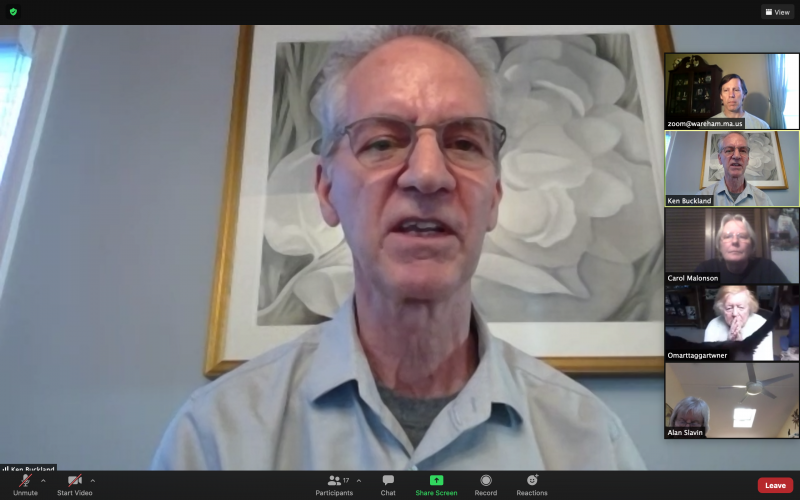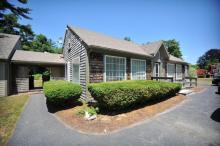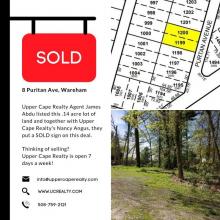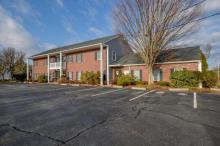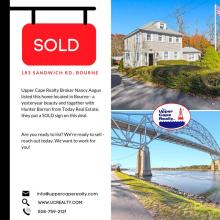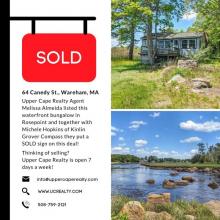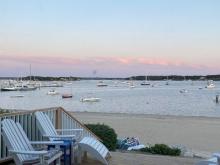Proposed amendments to wetland bylaws raise concerns for Conservation Commission
Two wetland bylaw amendments proposed for the Special Town Meeting currently scheduled for April 26 faced a frosty reception from members of the Conservation Commission during the board’s March 29 meeting.
Director of Planning Ken Buckland brought the proposed amendments to the town’s wetland bylaws before the commission. The text of the proposed changes can be read in the attached PDFs.
Removing ‘No Activity Zones’
The first amendment Buckland proposed would remove the “No Activity Zone” — which requires a 50-foot buffer between the waterfront and potential developments — for projects in the Wareham Village One and Onset Village One zoning districts with “water-dependent uses” or projects that require “development or alterations of land previously altered with structure.”
The Wareham Village One district stretches from the Tremont Nail Factory property to the British Landing condos, Buckland said. He also mentioned that a few developers have expressed interest in the region — one in the Old Greer Lumber site, two along Merchants Way and one at the Tremont Nail site.
In the Onset Village One district, Buckland said the only current projects that might be affected by the bylaw amendment would be the renovations to the Onset Pier and Harbormaster’s office.
The primary reason for the amendment, Buckland explained, was to clear up confusion among potential developers and project engineers and assure them that some waivers for the 50 foot “No Activity Zone” buffer are granted.
The amendment to the bylaw “takes out the absolute restriction on [...] 50 feet that says no structure can occur within that distance,” Buckland said. He told the commissioners that it would not infringe on their ability to apply wetland protections for proposed projects. “What we’re trying to do is make it attractive to developers,” he said.
Members of the Conservation Commission were displeased that the amendments were being brought to them only a day before the Board of Selectmen will be asked to vote on whether to include the proposed bylaw changes on the Town Meeting warrant that will close Tuesday, March 30.
“I’m just extremely upset that this bylaw change came in without any input from conservation,” said Sandra Slavin, chair of the commission.
They were also frustrated that the bylaw was being considered at all — because the commission already has the ability to waive the 50 foot “No Activity Zone” for projects.
“Personally, I don’t think don’t see how making the change makes it more attractive to a developer if we let the developer know we have the ability to grant a waiver,” said commission member Ronald Besse. He said he was concerned that making an exception for one area would be “doing ourselves and doing the wetland protections a disservice.”
Conservation Administrator Dave Pichette also pointed out that there is language in the bylaw already that allows for work to occur in “No Activity Zones” if the project sites have already been developed, which would apply to the Onset Pier project, for example.
“[Current bylaws] may not mean that these people can do whatever they want — because, again, that’s not going to be necessarily positive for the environment and the wetland resource areas that we’re here to protect,” Pichette said.
Allow exemptions for public projects
Buckland said the second amendment he proposed to the wetlands bylaw “means that the exemptions provided by the state law and regulations are available to be applied to municipal projects.”
He clarified further, saying that the most important exemptions are the ones that deal with stormwater structures and improvements within wetland resource areas.
Pichette, however, said the written explanation for the amendment was “very misleading.”
“The explanation makes it sounds like currently, because of our bylaw, that some of these projects that you see listed are not allowed to be done,” Pichette said.
He said the amendment makes it seem like “if this change went into place, then these projects could go forward without Conservation review or approval — which, simply again, is not in any way accurate.”
Pichette said most projects — even public access or infrastructure projects — would require commission review and approval regardless.
“The only thing that’s exempt is for existing structures to be repaired or rebuilt,” he said. “That’s currently something that our own bylaw provides for and allows.”
For that reason, Pichette said he was confused about why the amendment to the bylaw was being proposed.
Ultimately, the consensus among commission members was that there hadn’t been enough time to properly review either of the amendments to make recommendations.
“We needed a lot more time to look at this and to understand it better,” said commission member Carol Malonson. “If we are already able to already make waivers for things, then it’s a moot point. [...] I think we really need to discuss it and look into it a lot further.”
The proposed amendments to the wetland bylaws will appear before the Board of Selectmen at their March 30 meeting. The Selectmen have the ability to approve putting the amendments on the Town Meeting warrant, at which point the decision will be left up to the voters.
“It’s not our say,” Slavin said. “We’re just one of several people who will be on Town Meeting floor who can say ‘yay’ or ‘nay.’ [...] So if this goes through as it’s presented, I expect all of us to be at Town Meeting and voice our concern about the lack of preparedness or completely understanding what this bylaw change is.”
She closed the discussion on the issue with strong words of caution:
“Honestly, last time we were given a bylaw change without any input from conservation… I think it might still be litigation.”



